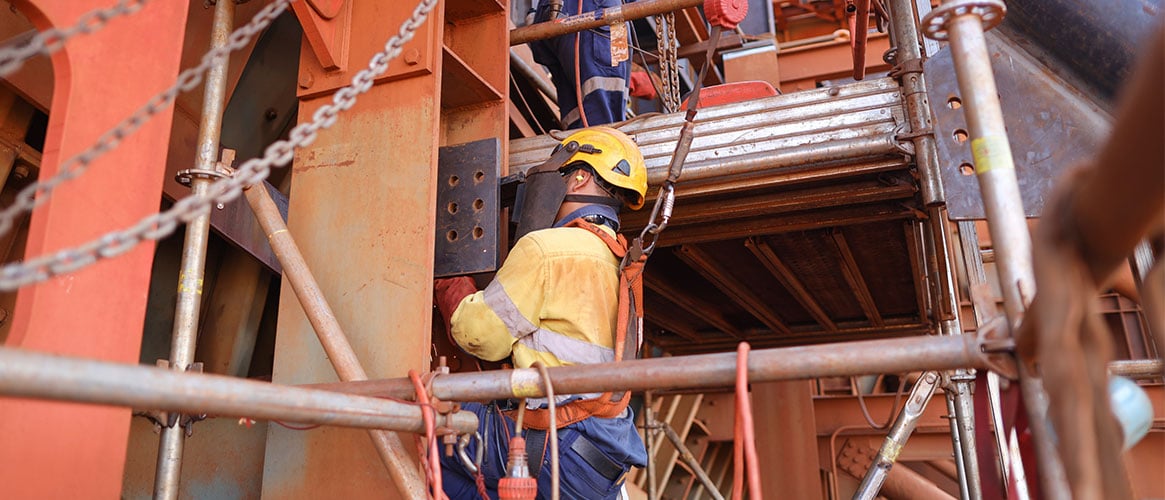Your workers can help prevent a fall by selecting the correct lanyard for the job. A lanyard is a connecting device between a full body harness and an anchorage point, horizontal lifeline, or vertical lifeline. The two most common types are an arresting lanyard and restraint lanyard, and both types of lanyard must have a label indicating it has a rating from the American National Standards Institute (ANSI).
An arresting lanyard includes a deceleration device designed to slow the speed of a fall and suspend a worker in the air without causing an abrupt stop to the fall. Such an abrupt stop can lead to a serious injury. Typically, the deceleration device should be connected to the D-Ring, but be sure to check the manufacturer’s instruction manual on where the deceleration device on the specific lanyard being used should be connected.
A restraint lanyard does not have a deceleration device. It connects the worker’s harness to the lifeline. The lifeline must be shorter than the distance between the anchor point and the edge of a roof or “fall zone.” The restraint system does not need to incorporate any free fall distance so arresting forces, clearance requirements, and serious injuries to the worker are eliminated.
What your employees need to know about fall prevention lanyards
The most important thing is to determine the fall distance and anchor point before selecting the proper lanyard. Too often, employees will fail to select a lanyard with arresting properties where there is a potential to fall from an upper surface or they will miscalculate the overall fall distance when using the arresting lanyard. The arresting lanyard will add length to a fall, which must be calculated in the total fall distance to avoid striking a surface below.
Since the restraint lanyard does not gradually lower one’s body during a fall and will cause an abrupt stop that can lead to serious injury, a restraint lanyard should never be used if the employee is working close to an edge or any other area where they might fall while wearing this type of lanyard. The restraint option should only be used when the lifeline is shorter than the distance to the closest fall zone.
What your employees need to do when working with fall prevention lanyards
Determine if the conditions require the use of an arresting lanyard or a restraint lanyard. Prior to use, inspect lanyards for:
- Damage from cuts on each side of the webbing
- Broken stitching, fraying, contamination, or any other damage that might compromise the integrity of the lanyard
- Clear labeling
- Deformation, cracks, corrosion, or pitted surfaces on snap hooks
- Activation on the declaration unit—if the deceleration unit on the lanyard shows any signs of activation, remove it from service immediately
- A keeper spring that firmly self-closes the keeper and a lock that prevents the keeper from opening once locked
Any damaged equipment must be removed from service.
The life expectancy for most lanyards is about 3 years, and depends on how much the lanyard is used. You should always look to see what the life expectancy is based on the manufacturer’s recommendation along with the decision made by the competent person that inspects your lanyards.
Also, never connect a lanyard to a self-retracting lifeline (SRL) unless the manufacturer’s instructions for both the lanyard and the SRL specifically allow such a connection (NOTE: arresting lanyards cannot be used with SRLs as this can result in additional free fall for which the system was not designed).
When not in use, make sure your lanyards are properly stored. Hang them up to dry, keep them away from extreme heat and moisture, and remove them from any exposure to the UV rays of the sun.

